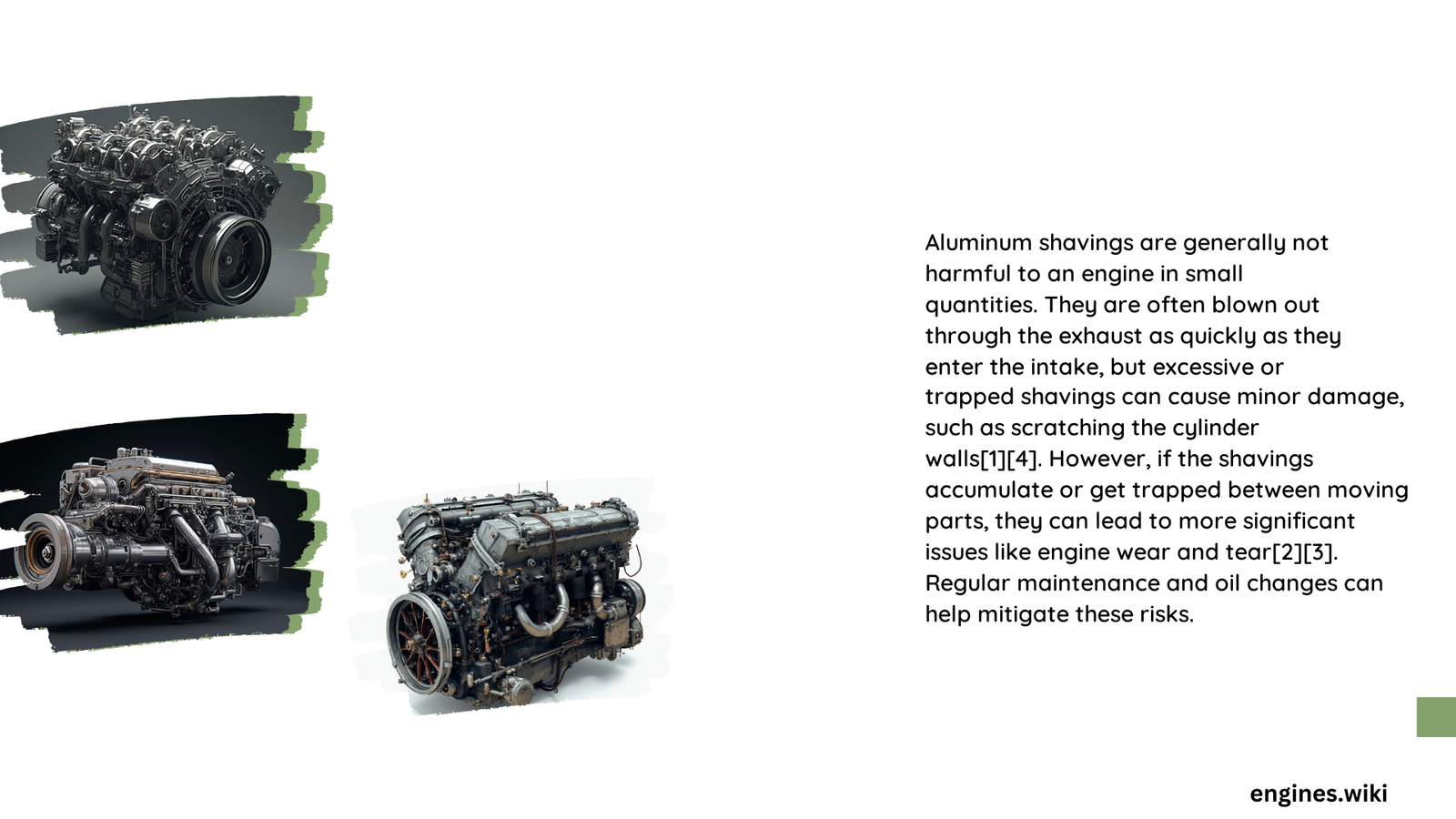Aluminum shavings in an engine can be a silent threat to your vehicle’s performance and longevity. While small amounts might not immediately cause catastrophic damage, persistent metal contamination can lead to accelerated wear, reduced lubrication efficiency, and potential engine component failure. Understanding the nuanced risks and implementing proactive maintenance strategies is crucial for preserving your engine’s health and preventing costly repairs.
What Are Aluminum Shavings?
Aluminum shavings are microscopic metal fragments that can originate from various engine components during machining, wear, or manufacturing processes. These tiny metallic particles can enter your engine’s lubrication system through different mechanisms:
- Manufacturing defects
- Improper machining processes
- Accelerated component wear
- Mechanical stress on engine parts
How Do Aluminum Shavings Enter the Engine?

| Source | Potential Impact | Risk Level |
|---|---|---|
| Machining Processes | Minor contamination | Low |
| Cylinder Wall Wear | Moderate metal particle generation | Medium |
| Bearing Surface Degradation | Significant metal fragment production | High |
| Piston Ring Friction | Continuous small particle generation | Medium |
Can Aluminum Shavings Cause Immediate Engine Damage?
Aluminum shavings do not typically cause immediate, catastrophic engine failure. However, their cumulative effect can be detrimental:
- Microscopic Abrasion: Small shavings can gradually wear down critical engine components
- Lubrication Interference: Metal particles can disrupt oil flow and reduce lubricant effectiveness
- Friction Increase: Accumulated shavings create additional friction between moving parts
What Determines the Severity of Aluminum Shavings?
Several factors influence the potential damage from aluminum shavings:
- Quantity of Shavings: More shavings increase potential damage risk
- Particle Size: Smaller particles tend to cause less immediate harm
- Engine Component Hardness: Softer components are more susceptible to wear
- Lubrication Quality: High-quality oil can help mitigate some potential damage
Recommended Actions for Aluminum Shavings Detection
How Can You Identify Aluminum Shavings?
- Oil Analysis: Professional laboratory testing
- Visual Inspection: Check oil filter and dipstick for metallic particles
- Listen for Unusual Sounds: Ticking or knocking might indicate metal contamination
- Performance Monitoring: Reduced engine power or rough idling
What Should You Do If You Detect Aluminum Shavings?
- Stop driving immediately
- Perform a comprehensive engine inspection
- Consult a professional mechanic
- Consider oil and filter replacement
- Investigate root cause of metal particle generation
Prevention Strategies
- Regular Maintenance: Consistent oil changes
- Quality Parts: Use high-grade engine components
- Professional Inspections: Annual comprehensive engine evaluations
- Use High-Quality Lubricants: Premium engine oils with better contaminant suspension
Cost Considerations
| Intervention Level | Estimated Cost | Complexity |
|---|---|---|
| Basic Oil Change | $50 – $100 | Low |
| Comprehensive Inspection | $200 – $500 | Medium |
| Potential Engine Repair | $1,500 – $4,000 | High |
Final Recommendations
While aluminum shavings can potentially harm your engine, proactive maintenance and early detection are key to minimizing risks. Regular professional inspections, high-quality lubricants, and immediate attention to unusual engine behavior can significantly extend your engine’s lifespan.
Expert Tip
Always prioritize preventative maintenance over reactive repairs. The cost of routine checks is minimal compared to potential engine replacement.
Reference:
– [Society of Automotive Engineers Technical Papers]
– [Engine Maintenance Professional Guidelines]
– [Automotive Lubrication Research Consortium]
